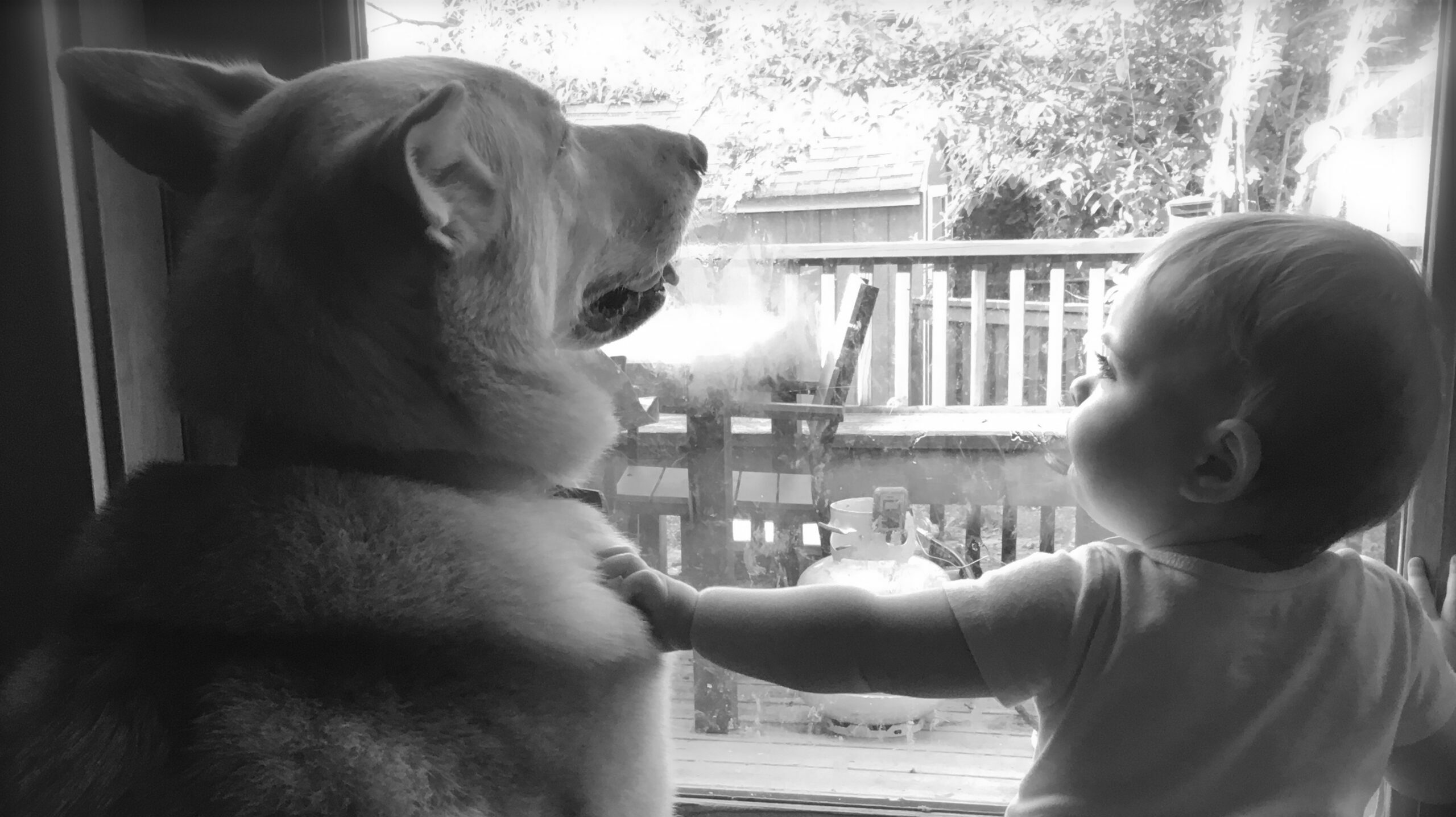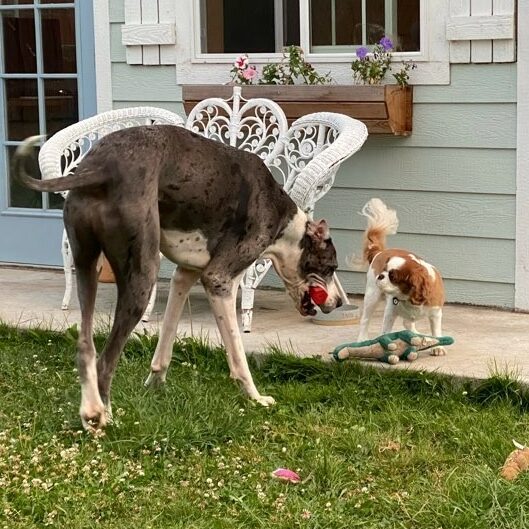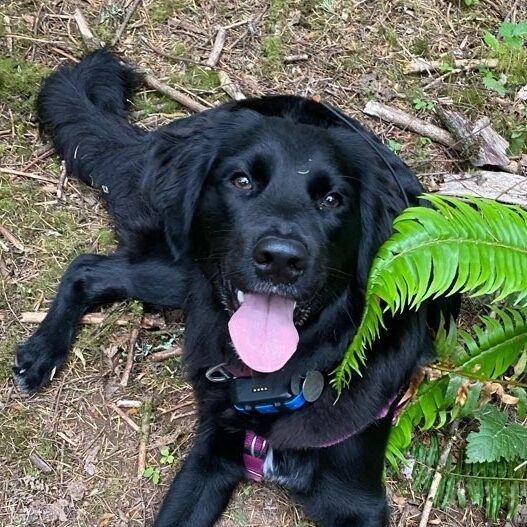Why a strong bond between you and your dog
is far more important than if they put their butt on the ground when you tell them to.
by Kerry Ryan, Certified Professional Dog Trainer and Family Dog Mediator
I don’t care one little bit about "obedience." I don’t issue commands. I don’t believe in human displays of dominance over dogs. I don’t believe in using force to get what I want.
Furthermore… I honestly think all of that stuff is kind of silly, the product of Homo sapiens’ innate desire to feel powerful. If I need to zap a dog with electricity to feel like I have big cajones, that’s just… it’s so weird.
Trainers who use aversives may claim that they are “balanced” by using punishment when absolutely necessary, but I am telling you: it is not necessary. Using aversives does not make a trainer “balanced,” it only makes them unaware of the scientific method, dog cognition, and true operant conditioning. I could write a book and a half about why aversives don’t work, but I’ll give you the Cliff’s Notes version: aversives create unintended consequences, they erode the the bond between handler and dog, they create emotionally shut-down dogs, they simply do not work as well as positive methods, and they secretly make you feel a little icky (unless you really want the biggest cajones, like, real bad).
Here’s what I do believe: The fastest, easiest, and most effective way to have an “obedient” dog is to build a strong relationship between the two of you, one that is built on trust, respect, understanding, empathy, humor, and humility.

May every dog we train be as blissful as Oscar.
Cultivate your relationship first, and the “obedience” will follow. Only… it won’t look like you issuing commands and your dog doing what you say. It will instead look like a conversation between the two of you, one in which you both speak and you both listen, like any good conversationalists.
Scientifically speaking, Homo sapien and Canis familiaris are in a “commensal” relationship, a pairing in which Species A benefits from Species B and Species B neither benefits nor is harmed. Why? Evolution doesn’t really care about why or why not, revolving instead around what works and what doesn’t. It simply “works” for dogs to have a relationship with humans, and it neither helps nor hurts us. Thanks to this commensalism, dogs are actually one of the few species that domesticated itself, which is pretty damn cool.
While our relationship with dogs doesn’t benefit us in an ecological or evolutionary sense, that’s where the “doesn’t benefit” buck stops. Because of course we socially and emotionally benefit from a life with dogs, immeasurably so.
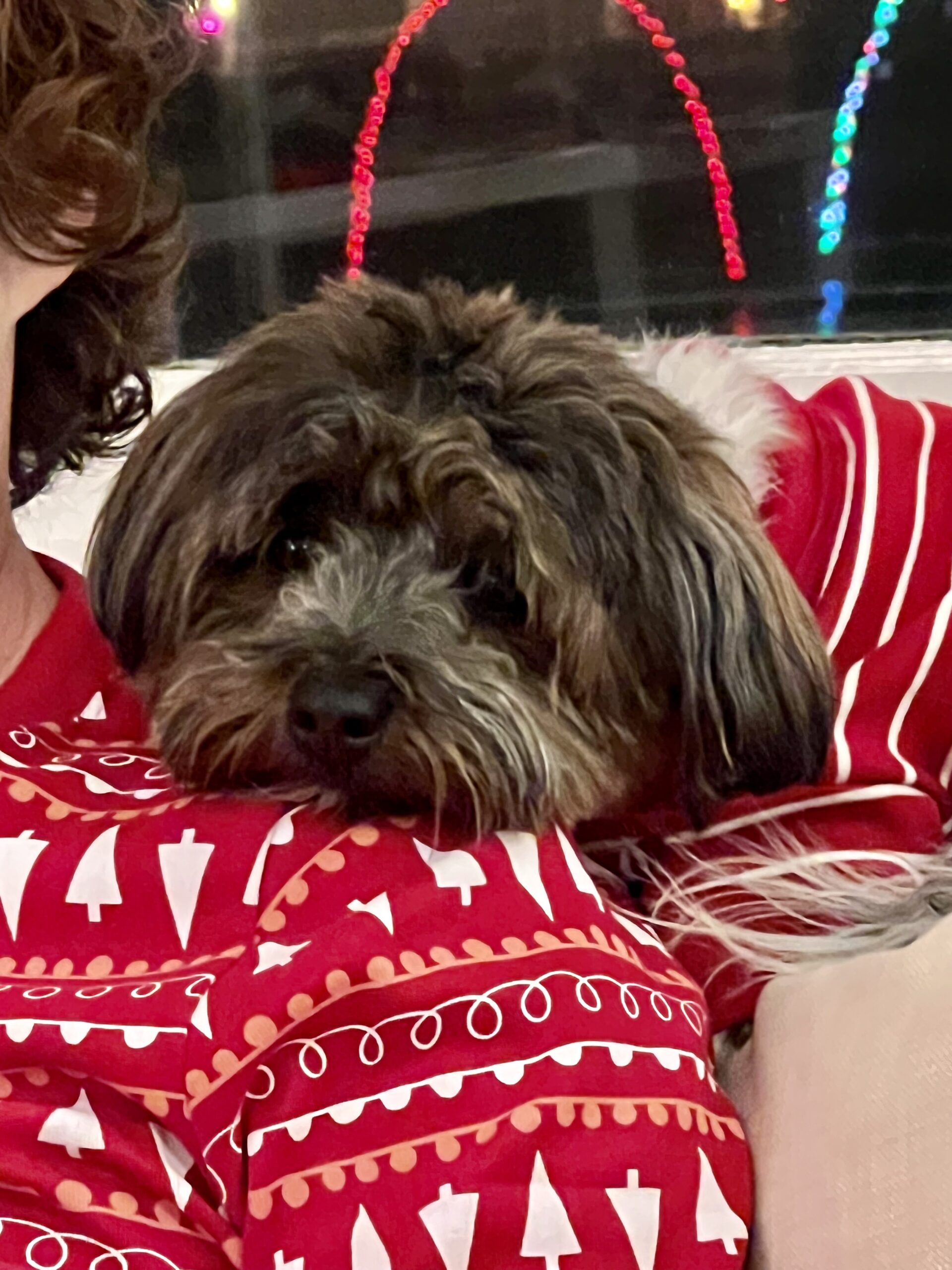
And yes, we do have matching Christmas pajamas.
My life with JoJo is simple, full of fun patterns and comfortable rituals. She is my friend and I am hers, full stop. I love her, and she loves me, both of which give my heart the encouragement it needs to grow ever bigger, day by day. Relating with JoJo is an exercise in empathy, an area in which we all need more practice, and also in love and affection, which naturally spills over to the other parts of my life. JoJo also helps to “rewild” me by getting me outside, regularly, which is tremendously important to my mental health (and hers).
As a trainer, I believe that the relationship between dog and handler is far more important than specific skills. I will absolutely teach you how to build a strong reinforcement history for things like sit, down, come, drop-it, leave-it, loose-leash walking, etc. Much more important to me, however, is helping to develop a strong bond with your dog, one built on communication, empathy, and curiosity.
Here’s how we’ll get there.
Set your dog up for success.
Your dog will do their best learning when they are under threshold (i.e. possessing the capacity to use their cerebral cortex for more advanced neural processing). When a dog is over threshold due to fear, overstimulation, over-tiredness, excitement, discomfort, pain, etc, the part of the brain that processes these emotions—the amygdala—takes the wheel. Not much learning can happen when the amygdala is in charge, as most of a dog's neural processing will go toward basic operations like fight, flight, freeze, and fawn. It’s important to set your dog up for success by only training when and where they possess the capacity for learning, and in the environment in which they can learn. Keep your eye out for health/pain issues, give your dog the exercise and enrichment they need, and make sure they are feeling safe, comfortable, and secure in their surroundings… all before you start training.
Set yourself up for success.
Create a reasonable practice routine that you can stick to, whatever it may be. “I will train for three minutes at a time, three times per day,” is absolutely fine and is far preferable to a goal you won’t be able to meet, especially if that will make you feel bad. (We prefer positive reinforcement in these parts.) Consider small things to help you remember to train: pair five minutes at the end of every meal; schedule training time into your calendar and set an automated reminder for the calendar events; put up post-it notes. You know yourself best, so do what works best for you. Make sure you have the training supplies you need, everywhere you are with your dog. Hang the treat pouch with the leash so that you always have reinforcers on walks. Get little vacuum sealed containers, fill them with treats, and put at least one in every room of your house for surprise training with your pup. And above all, be gentle with yourself. You are also learning something new, and you are going to get things wrong sometimes. It’s OK. Lastly, just like with your dog, you will do your best learning when you are emotionally regulated. Breathe, stretch, drink some water. Your internal environment will directly affect your dog's external environment. Make sure you feel safe, comfortable, and secure in your surroundings before you pick up that clicker.
Remember that your dog is a very good DOG.
Dogs are an entirely different species from humans, with a different set of social rules, environmental affordances, and genetic mandates. It is imperative to remember that most human rules are not inherently reinforcing for our canine companions. Additionally, it is your duty to provide your dog with species-specific and breed-specific opportunities so that they can thrive in human home-based captivity.
Remember that you are a very good PERSON.
It doesn’t matter where you were before, you are here now. If you have used aversives in the past, you were genuinely trying to do right by your dog with the information that was available to you. A huge step forward in creating ethical behavior modification is seeking the help of a Certified Professional Dog Trainer. You already have a gold star in my book.
Teach your dog to love the behavior you want to see.
The fastest way to teach your dog what is acceptable in our human world is to teach them to love our rules. Help your dog genuinely love the behaviors you are teaching by pairing/rewarding those behaviors with things that your dog already loves. When a dog has fun learning, they will engage in a behavior willingly (and often with lots of enthusiasm). Teach Sunny that she gets to do something, as opposed to teaching her that she has to do that thing.
Teach yourself to love training.
If training isn’t very fun or rewarding for you, you probably just… won’t... do it. Find ways to incorporate games into your training. Work with a Certified Professional Dog Trainer as a coach through the process. (Any trainer worth their salt will know just how to have fun in training.) Set achievable goals and celebrate your successes.
Start at the beginning.
Both you and your dog will be successful if learning is challenging-but-attainable. Always start each training session at the very beginning of the process, and only level up (in very small steps!) when you’re both ready. Training is all about practice, practice, practice in low-distraction environments, and very gradually building up the level of difficulty. Train for a situation, not in a situation.
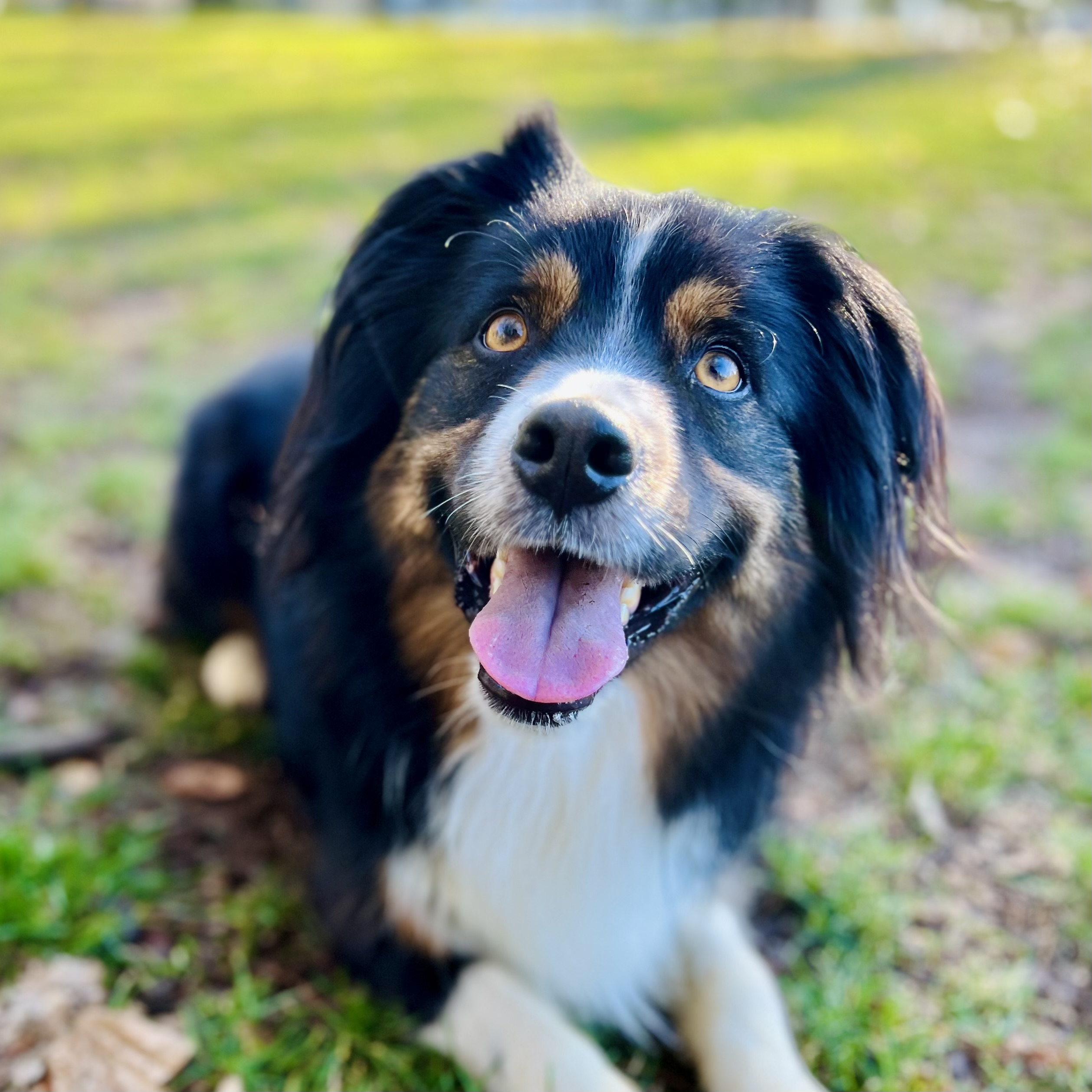
Would you like help in building a strong relationship with your dog? Cuz that's our jam. Please let us know if coaching would be helpful, either in-person or virtually. (It will, I promise.)

